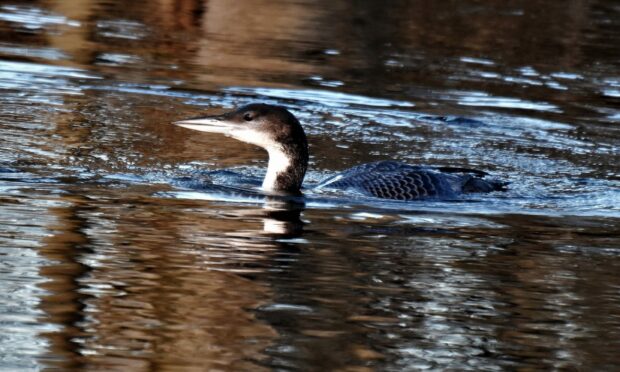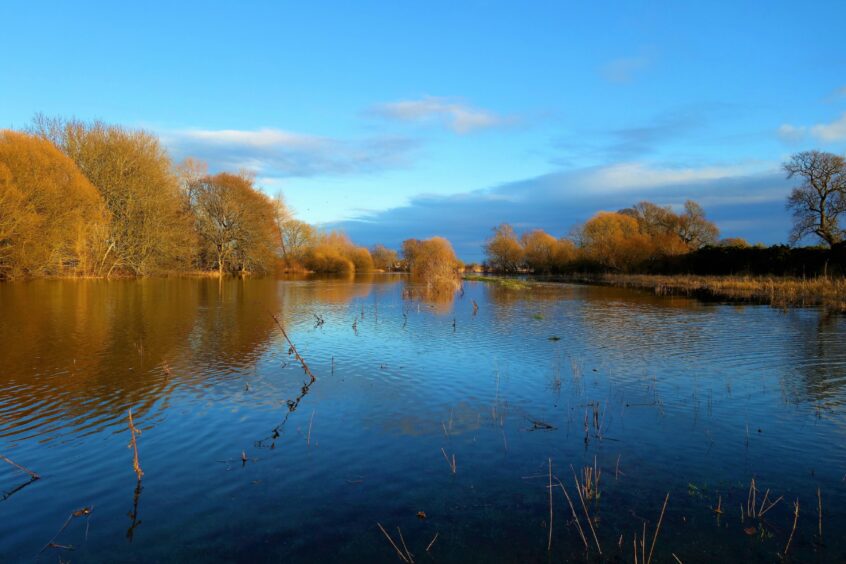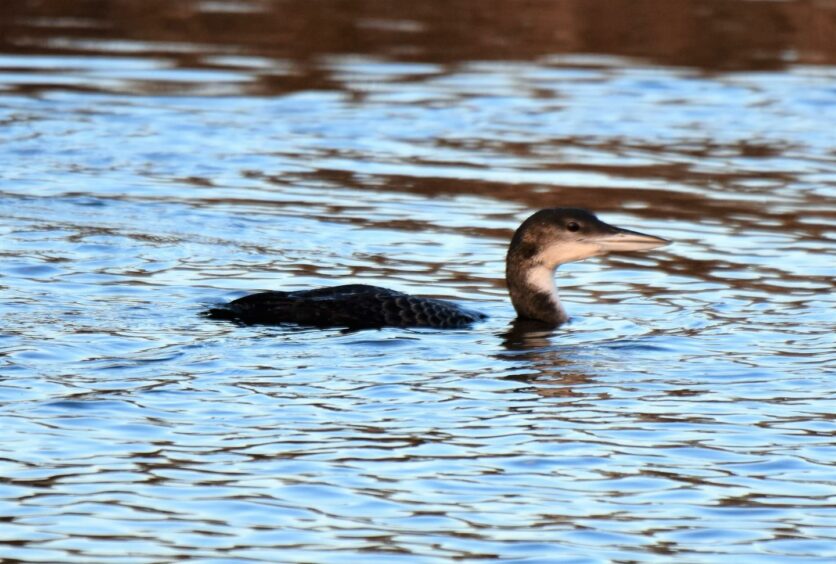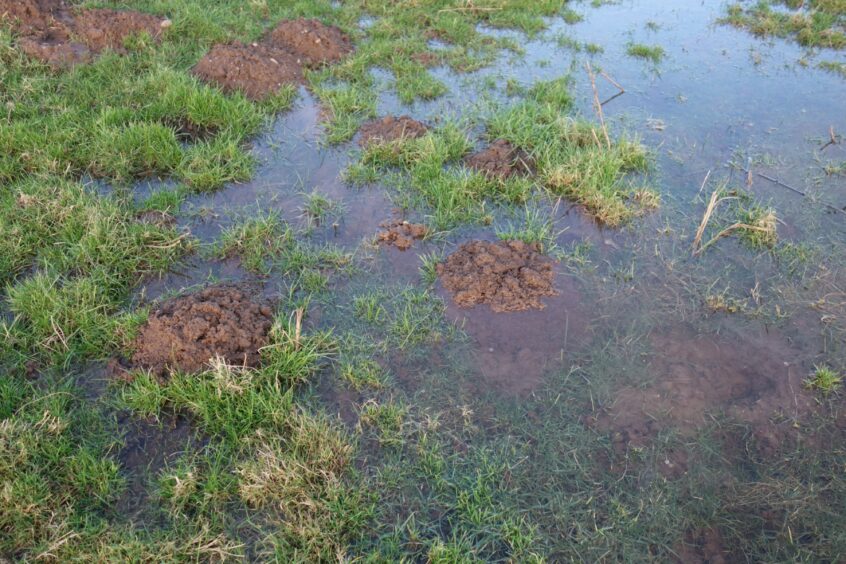Nature’s ability to surprise and excite is a constant source of pleasure for me, and this was beautifully illustrated when recently exploring the banks of the River South Esk near Montrose.
I was at Bridge of Dun, and my intention was to walk the southern bank downstream towards the vast muddy tidal enclosure of the Montrose Basin.
The only problem was I had not bothered to check the tide tables, and an unusually high tide had swept upstream, flooding and inundating the surrounding area and making the path along the riverbank impassable.
So, instead, I struck upstream, making my way across a half-flooded field to the bankside, where I spotted a large, duck-like bird out on the river, riding low in the water and with its back half-submerged.
The bird was back-lit by the soon-to-set winter sun, which made it challenging to scrutinise its dark silhouette through my binoculars.
However, by its shape and form, I recognised it as a diver of some type.
Better view
I backed away from the bankside and cut a field corner so that the sun was now behind me, enabling a much better aspect of the diver.
It was immediately apparent this was a great-northern diver, a bird that visits coastal waters in small numbers every winter, but a most unusual occurrence up a river.
Was it ill, I pondered, and had sought more sheltered waters to recuperate?
No, it looked well-enough and was frequently diving under in search of fish. I suspect, instead, it had moved into the Montrose Basin from the sea with the rising tide and then been swept upstream into the river by the fast-moving current.
Watching this great northern diver sparked memories of my last encounter with these wonderful birds the previous spring at Camusdarach beach near Arisaig on the west coast, where a group of half-a-dozen busily fished offshore.
Each time these birds dived under the water, they did so together as a unified team, which is a hunting technique that increases the chances of catching fish by covering the seabed in a broad sweep, stirring up creatures like a fishing trawl.
As the divers fished, their haunting, long-drawn out cries occasionally drifted across the sea breeze, imparting an eerie, almost ghost-like quality.
Common loons
Great northern divers are called common loons in North America, and it was entirely possible that some of the divers I was watching at Camusdarach that spring were on the verge of migrating to Canada for the breeding season (they also nest in Iceland and Greenland).
I casted such memories aside, and wandered back across the partially flooded pasture by the River South Esk.
A cluster of half-submerged molehills poked above the water.
I have long wondered what happens to moles when the fields they live in flood.
Are they fleet of foot enough to escape the rising flood waters, or can they survive in air pockets in their elaborate burrow systems?
I imagine it must be the latter, although when there is prolonged and deep flooding, many animals must succumb.













